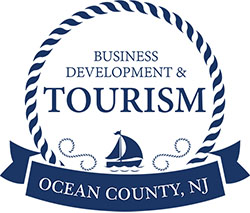Tourism Marketing – Old and New Platforms Converge to Capture New Visitors
By: Dana Lancellotti
 Technology has swept the tourism marketing industry, with an ever-evolving selection of strategies and tools that promise to harness and deliver the exact tourists we desire. Enticing travelers to visit our destination is the ultimate goal, and greatest challenge, of all tourism marketing agencies and attractions. Today we have more options, more media platforms, more ways to convey a message than ever before. “Demographic targeting” has leaped to the most precise, laser-focused methods imaginable and exciting new tools have emerged to proactively engage and persuade consumers.
Technology has swept the tourism marketing industry, with an ever-evolving selection of strategies and tools that promise to harness and deliver the exact tourists we desire. Enticing travelers to visit our destination is the ultimate goal, and greatest challenge, of all tourism marketing agencies and attractions. Today we have more options, more media platforms, more ways to convey a message than ever before. “Demographic targeting” has leaped to the most precise, laser-focused methods imaginable and exciting new tools have emerged to proactively engage and persuade consumers.
Many tourism destinations enlist advanced methods to promote their area with digital media, featuring commercials and/or banner ads on websites and mobile devices, enlisting hyper-focused targeting methods. Virtual tours online are also very popular. This allows web searchers to “walk” through locations, stroll downtowns, and interact and navigate scenic landscapes from their own computer while shopping their next getaway.
But going back to basics, there are still “Old-fashioned” venues which allow us to present our destinations directly, face-to-face with prospective travelers, and they remain relevant today. That is, with the use of updated twists.
Consumer Travel Shows, Food and Beverage Expos, large festivals and industry trade shows, give marketers the chance to meet consumers directly, competing aggressively in a live environment while prospects decide where they will book their next vacation. These venues are highly energized and urgently competitive. There is pressure to immediately capture the prospect’s interest in the moment they arrive at your booth. But how do you stand out in an Expo Center amidst dozens of onsite dream vacation options?
Visuals are key. Images that grab attention and prompt vacation shoppers to imagine themselves enjoying your destination. This “Experiential Marketing” is strategic and powerful. To maximize the impact, one particular tool offers a fully immersive adventure with sight, sound and the feeling of motion. This is the 360 degree, virtual reality video and it will transport prospective travelers to view and even engage with a location of choice. With a headset device (called an “oculus”) the viewer will safely experience the sights and sounds of the landscape, recreational activities, entertainment, scenery, even thrilling, high-speed attractions, through an incredibly life-like, simulated video. With 360-degree views, participants are immersed in an alternate reality that transports them for just a few minutes. This preview can be quite a tease, compelling the prospective traveler to want more and hopefully converting them to a booked vacation at your venue.
While having the opportunity to use this state-of-the-art marketing tool, Ocean County’s Dept. of Tourism found great success enticing families and various prospective travelers to consider the Jersey Shore for their next great vacation. At the annual Hunting Fishing and Camping Show in Montreal Canada, OC tourism introduced a high-quality 360 degree Virtual Reality Video to the consumers who visited their tourism booth. The excitement, the pure delight of those who experienced this oculus journey was evidence that this Experiential Marketing technique is highly effective and drives tremendous energy and interest toward the featured destination. Expense is considerable, but the investment is wise. As technology moves us forward, those who are at the forefront of capabilities will undoubtedly see results in their highly competitive tourism
booth. The excitement, the pure delight of those who experienced this oculus journey was evidence that this Experiential Marketing technique is highly effective and drives tremendous energy and interest toward the featured destination. Expense is considerable, but the investment is wise. As technology moves us forward, those who are at the forefront of capabilities will undoubtedly see results in their highly competitive tourism
market. For Ocean County, tourism is a $4.7 Billion economic engine and generates tens of thousands of jobs each year. Driving more visitors to our region is a high priority. Keeping up with the latest technology may be key to the future of tourism at the Jersey Shore.



